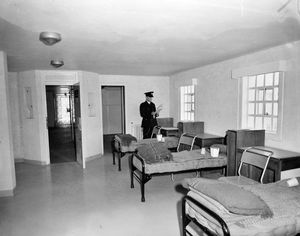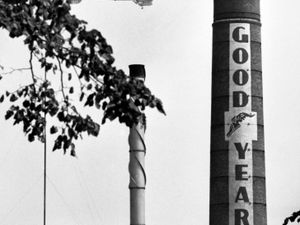Flashback – July 6
2011

Today we give you an inside story – that of one of Shropshire's prisons, and probably not the first one you thought of.
While many Salopians will be able to bring to mind the closed Shrewsbury jail, the Stoke Heath institution near Market Drayton has been for much of its life associated with young offenders, rather than adult prisoners.
But an announcement on July 6, 2011, signified a move to a broadened role.
The Ministry of Justice announced that Stoke Heath Young Offender Institution would become a Category C prison, meaning it would house low-risk adults as well as the 18 to 21-year-olds it had at the time.
Today that dual role continues, as it is described as a men’s prison and young offender institution.
If you know somebody in there, you can't visit at the moment as prison visits are temporarily suspended.
According to a government website "Stoke Heath is committed to providing a safe and educational environment where men can learn new skills to help them on release."
Among other information is that Stoke Heath holds six to eight family days a year, "giving residents more time to spend time with their children in a relaxed setting."
There's a family-friendly dress code. Visitors cannot wear hooded clothing, coats and jackets, ripped jeans, padded clothing, or headgear other than that worn for religious reasons.
And naturally there are strict controls on what you can take in.
For the beginnings of this institution, we go back to 1964, with its opening on April 6 of that year.
"It is one of the only three 'secure' prisons to be opened in Great Britain during the present century," reported the Newport Advertiser at the time.
It cost £1.1 million to build, covering 46 acres of what was previously part of RAF Tern Hill. A former hangar was turned into a laundry and there were four cell blocks, each containing 60 single cells.
The prison was surrounded by a barbed wire fence, 15ft high, while inside the fence was an electronic anti-escape device which had never previously been installed in a British prison.
The paper noted that the nearby RAF base operated helicopters "which prisoners contemplating absconding might think of using as a means of escape."
It went on: "Mr G G S Chambers, the Prison Governor, who was previously Governor of Stafford Prison, with characteristic forethought, has inquired of the RAF authorities what chance a prisoner might have of escaping by helicopter, but they have replied that a helicopter presents sufficient difficulty in flying to make such chance remote."
Of course no prisoner at Stoke Heath ever escaped by helicopter, although that is not to say there have not been escapes – five boys escaped in 1973.
In 1964 the first batch of between 20 and 30 prisoners arrived from Stafford, and were to be gradually increased to a maximum of 300, all serving sentences ranging from 18 months to four years.
Although Stoke Heath started as an adult prison, it was converted two years later to a Borstal – a type of juvenile detention centre which aimed to reform youngsters through trade training, education, and a work programme.
They were called Borstals because the first one was opened in the village of Borstal in Kent.
The Borstal system was abolished in the 1980s, superseded by Young Offender Institutions for 15 to 21-year-olds.
Stoke Heath became a YOI in 1988, and later underwent a big revamp. By 1998 it had around 600 inmates, all serving sentences of up to four years.
The population included young offenders aged from 17 to 21 who were allocated to Stoke Heath from Merseyside, Manchester, or North Wales, and the institution also catered for juveniles aged from 15 to 17 from Wales, Shropshire, and Cheshire.
They had the chance to learn skills in industry, with Stoke Heath focusing particularly on engineering.
Life inside is no picnic though, and from time to time Stoke Heath has made headlines for the wrong reasons, including rooftop protests, disturbances, and violence.
In 2000 Stoke Heath was featured in a grim ITV fly-on-the-wall documentary about the realities behind bars for the institution's teenage inmates.
Sometimes it has been the staff themselves who have been unhappy – a few years ago prison officers complained that more money was being spent on educating inmates than on their own children in local schools.
As for numbers at Stoke Heath, a year ago there were reportedly 755 prisoners.





